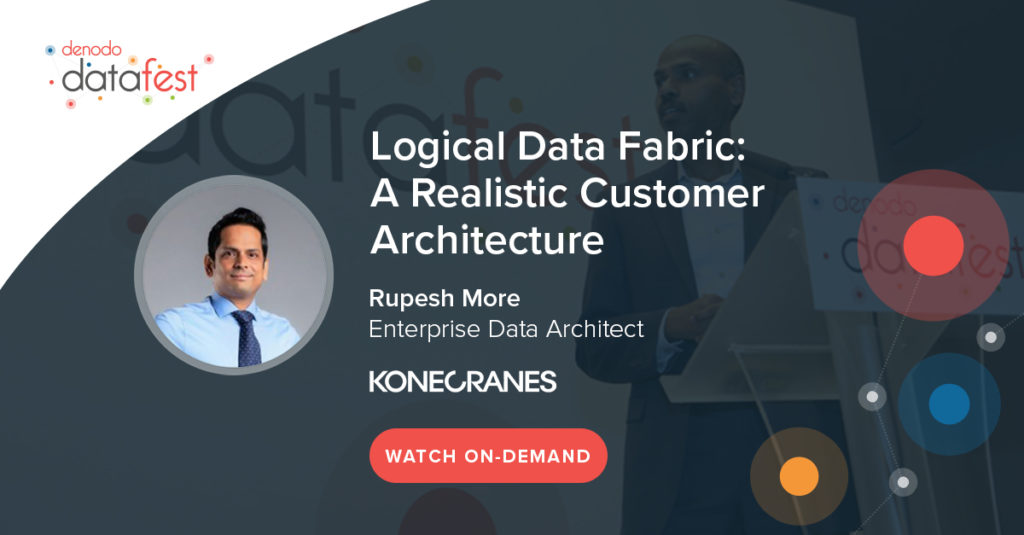
Konecranes is an industry-leading group of lifting operations, with a broad customer base that includes engineering and process industries, shipyards, and ports. The company delivers productivity-enhancing solutions and services for lifting equipment of all sizes. In 2020, Konecranes had a market turnover of $3.8 billion with approximately 16,600 employees in 50 countries. Konecranes considers improving the safety and productivity of its customers and their operations as its main goal, and the company achieves this by leveraging data and analytics to report and monitor the performance of millions of lifting devices, and using that information to optimize operations and safety.
Siloed Data Infrastructure Gave Rise to Data Challenges
Konecranes is a major player with broad operations across geographies, which results in a complex business and IT landscape that is fraught with data challenges. The company was unable to holistically leverage data from a variety of data sources with different data formats, due to the limitations of the extract, transform, and load (ETL) processes that it had been relying on, as they required a long development cycle, resulting in delayed data access for self-service and data science projects. ETL was also not the right method for integrating cloud and on-premises data sources, and it could not create reusable assets for data processing and transformation.
A Logical Data Fabric to Streamline the Data Infrastructure
To successfully cope with these challenges and enable enterprise-wide digitization and improved data analytics, Konecranes built a next-generation data platform centered around a logical data fabric. This platform seamlessly aggregates data from different kinds of data sources, whether they are typical enterprise sources like ERP, CRM, supply chain systems, or operational data sources from the factory floor, and then makes the processed form of that data available to a variety of reporting tools in the right format, at the right speed, and at the right level of automation. The processed data is not only used to serve traditional reporting requirements such as business intelligence (BI) but also the new needs of self-service, data science explorations through APIs, and the micro-service-driven development of digital services.
The important question is how does this data platform act as a logical data fabric? The answer lies in the Denodo Platform’s data virtualization capabilities, which can gain views of data without needing to transferring that data from their sources into a new consolidated repository. This core capability of the Denodo Platform is now topped with other capabilities including a data catalog, data-as-a-service, and data science capabilities, making it instrumental in enabling logical data fabric. At Konecranes, the Denodo Platform provides a way to quickly and rapidly develop APIs to combine and deliver data, called “API marts” at Konecranes, which are easier to build require much less maintenance than traditional APIs. To serve enterprise-wide BI reporting needs, the Denodo Platform is also used to create data marts. The Denodo Platform also provides integrated master data, which enables Konecranes to offer master data as data services, to support different kinds of digital-action and analytics use cases.
Enabling Accelerated Cloud-Based Analytics
The business benefits of the logical data fabric are already quite apparent at Konecranes. It has improved speed and agility around data engineering, data integration, and processing, so the organization can now respond more quickly to business changes triggered by digital transformation. The semantic data layers provided by the Denodo Platform have also enabled the modernization of analytics as a whole by facilitating an accelerated transition to cloud-based analytics. The logical data layer abstracts end users from the complexities of cloud transitions, so Konecranes can migrate to the cloud without interrupting regular business operations. (Downtime is a key factor dissuading organizations from migrating to cloud technologies and realizing their benefits).
To learn more about how Konecranes built a logical data fabric with data virtualization, watch the video below, taken from a recent Denodo DataFest:
- Laying a Modern Data Foundation to Fight Financial Crimes - September 2, 2022
- The Secret Sauce of LeasePlan’s Award-Winning Logical Data Fabric - August 4, 2022
- Tackling Cloud Data Integration Woes with the Denodo Platform - February 3, 2022

